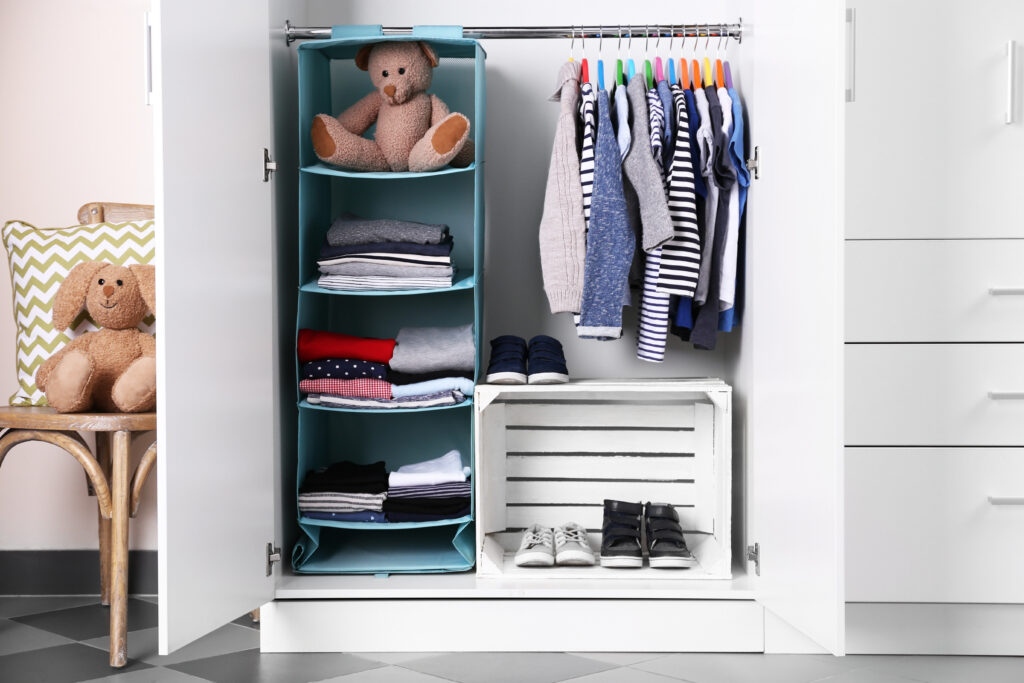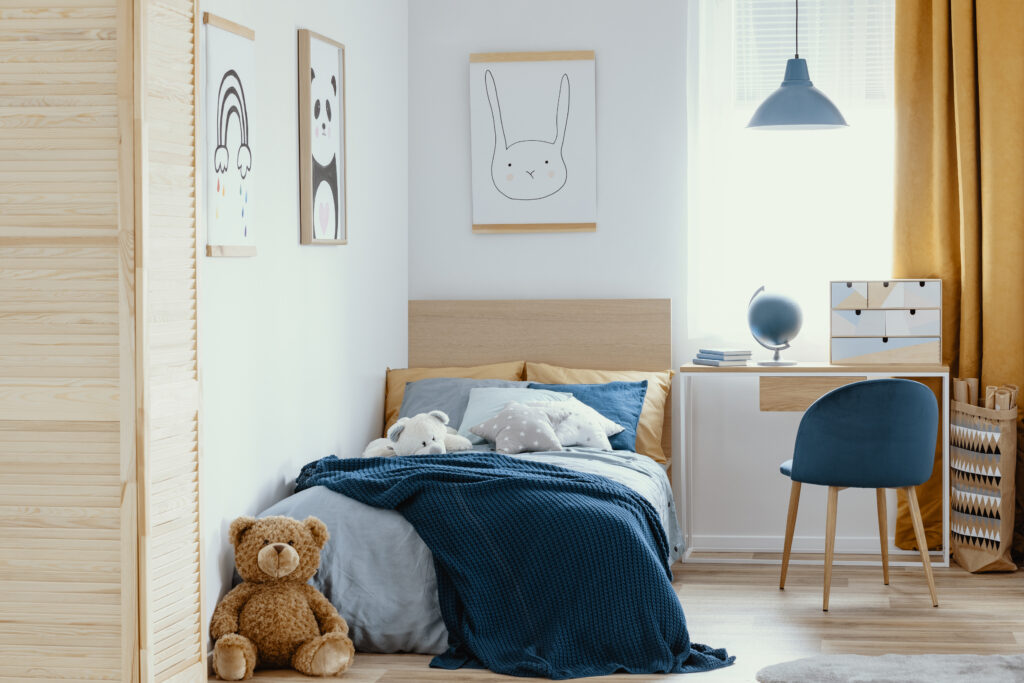When designing your children’s bedrooms, it can be easy to be persuaded into following trends or splashing out on themed furniture. However, trends can be short-lived and children tend to grow out of their interests over time. Themed furniture can also be cheap, low-quality and break easily. Ideally, a kid’s bedroom space should have longevity and practicality but should also be exciting and fun for them!
We’ve created this blog to help with some ideas for designing your children’s bedrooms to suit the whole family!
Choose a Theme
First things first, decide on a general theme that suits your children’s individuality. Try to make subtle hints towards the theme and don’t go over the top with something big that your children might get bored of. For example, use subtle theme colours for wall paint and larger furniture. This way these colours can be adapted to a new theme in the future. Use smaller changeable objects such as artwork and duvet covers with more theme-specific imagery.
You might also want to consider how your children’s rooms will fit into the rest of the house’s interior design. It’s a good idea to stick to more neutral, less bold colours so that they can be more easily matched to other rooms. Ultimately it’s up to you and your budget how far you go with the theme but it’s smart to choose a theme that’s simple and can be created from small accessories to avoid redecorating every year. Check out our blog on bedroom colour schemes for more tips!

Use Clever Storage
Clever storage will help to make any room tidier but it is especially important to organise your kid’s toys and clothes. Installing smart bedroom storage that fits the space and is easily accessible for your children will make your life a lot easier when it comes to tidying away for bedtime. When planning fitted furniture it is important to consider what the storage will be used for. For example, prioritising space for games, toys, or school uniforms. You should also think about how your children’s storage needs will change over time. Shelves and drawers can be used for a variety of items from toys to school work and books.
Fitted furniture that spans from wall to wall can also be a much safer option for young children, with less sharp corners and edges. If you are interested in installing fitted furniture for your children’s bedrooms, get in touch!
Consider Cleanability
Depending on how young your children are, you might want to consider different materials and finishes to keep the room as clean as possible. Wallpaper can become scruffy if covered in fingerprints and dirt. Wipeable paint is usually a better alternative for a young child’s room. Some furniture finishes are more durable than others. Anti-fingerprint and anti-scratch materials have been developed to support busy family homes. Our Rockingham Range includes extremely robust finishes and a wide variety of door options so is a great option if you want to keep your furniture looking new for longer.
Fitted wardrobes can also be easier to clean than free-standing furniture as they can be made to fit the ceiling height and wall width meaning fewer gaps and places to collect dust.

The Bed
The bed is perhaps one of the most important elements to consider when designing your children’s bedroom. There are so many options for children’s beds it can be a little overwhelming. A simple single bed is a good starting point for a growing child as it is big enough for them to grow into and can be revamped over the years. Bunk beds or cabin beds are other popular options if you are short on space or looking for more storage.
If you’re looking for a long-term solution, avoid themed beds or smaller beds that your children will grow out of or get bored of.
Make it Fun
Whilst we mostly advise sticking to simple and timeless furniture, it’s important to make your child’s bedroom fun for them. Add fun and colourful accessories that match your chosen theme, which can easily be swapped out as tastes and styles change. Pillowcases, duvet covers and wall art in your chosen theme, or even a themed play corner will help your child to make their room their own!
Also, make sure to consider their hobbies and interests when designing the layout of the bedroom. If your child has a large toy car collection, consider some extra storage where these could be displayed. If your child plays an instrument, create a dedicated space where they can store it and practice.
We hope you enjoyed this blog and benefitted from some of our tips for designing your children’s bedroom. Every child is unique so it is valuable to spend some time making sure their bedroom fits their individuality. If you’re looking for fitted, unique furniture for your home then be sure to get in touch to see how we can help!


Recent Comments